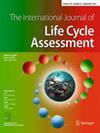在环境产品声明中列入资本货物库存数据的问题后果
IF 5.4
3区 环境科学与生态学
Q2 ENGINEERING, ENVIRONMENTAL
引用次数: 0
摘要
摘要目的最近对建筑产品产品类别规则(PCRs)的更新(国际环境产品声明系统)引发了环境产品声明(EPD)的所有者和用户的方法问题。更新的聚合酶链反应导致资本货物数据被隐式地包括在epd的生命周期清单(LCI)中。本文批判性地考察了资本品在epd中的作用,并确定了当前方法、LCI数据集和解释中的主要缺陷。为了评估资本品在EPD中的作用,本文论述了生命周期评估(LCA)方法的基本原理、范围、可用的LCI数据以及资本品对EPD结果的影响。使用ecoinvent数据库,我们根据EN 15804+A2(2019)标准分析了在选定的38种建筑产品中包含和排除资本货物的影响。最后,基于ecoinvent中可用的资本品原型,我们估计了资本品对一套生命周期影响评估(LCIA)指标的相对贡献,并应用蒙特卡罗模拟来确定所选建筑产品的资本品数据中的不确定性范围。结果和讨论我们的研究证实,当资本货物包括在当前可获得的背景LCI数据基础上时,它们对气候变化的影响大多很低(增加10%),但它们对非生物资源消耗(矿物和金属)、土地利用和/或人类毒性指标的影响可能很大(增加100%)。有趣的是,当进一步研究ecoinvent资本品LCI数据集时,很明显,对资本品和基础设施数据的估计存在不准确、不一致和可能不正确的情况。这些发现提出了以下问题:基础LCI背景数据的适用性,以及是否应该允许非归属资本货物定义环境保护结果。对资本货物纳入的要求导致了LCA从业者的一个主要难题。建议将资本货物排除在外,直到LCI数据集的质量得到更好的改进和提高,EPD计划为处理资本货物提供更明确的指导。或者,epd可以透明地记录资本货物的包含或排除情况,以便明确区分资本货物对LCIA指标的影响。本文章由计算机程序翻译,如有差异,请以英文原文为准。
Problematic consequences of the inclusion of capital goods inventory data in Environmental Product Declarations
Abstract Purpose A recent update to the Product Category Rules (PCRs) for Construction Products (of the International EPD System) has triggered a methodological issue for owners and users of Environmental Product Declarations (EPDs). The updated PCR has led to capital goods data being implicitly included in the Life Cycle Inventory (LCI) of EPDs. This paper critically examines the role of capital goods in EPDs and establishes major shortcomings in the current methodology, LCI datasets and interpretation. Methods To evaluate the role of capital goods in EPDs, this paper provides a discourse on the fundamentals of Life Cycle Assessment (LCA) methodology, scope, available LCI data and the impact of capital goods on EPD outcomes. Using the ecoinvent database, we analyse the impact of the inclusion and exclusion of capital goods in selected 38 construction products based on the EN 15804+A2 (2019) Standard. Finally, we estimate the relative contribution of capital goods to a suite of Life Cycle Impact Assessment (LCIA) indicators based on the archetypes of capital goods available in ecoinvent and apply Monte Carlo simulation to establish the range of uncertainties in the capital goods data for the selected construction products. Results and discussion Our research confirms that when capital goods are included based on currently available background LCI data, they mostly have a low effect (<10% increase) on climate change, but they can have an enormous effect (>100% increase) on abiotic depletion (minerals and metals), land use and/or human toxicity indicators. Interestingly, when looking further into the ecoinvent capital goods LCI datasets, it becomes clear that there are inaccuracies, inconsistencies, and possibly incorrect estimates of capital goods and infrastructure data. These findings raise questions about the suitability of the underlying LCI background data and whether non-attributable capital goods should be allowed to define EPD outcomes. Conclusion The requirement for the inclusion of capital goods leads to a major conundrum for LCA practitioners. It is suggested that capital goods be excluded until there is better refinement and improvement of the quality of LCI datasets and EPD programs provide clearer guidance on dealing with capital goods. Alternatively, EPDs could document transparently the inclusion or exclusion of capital goods, so that there is a clear separation of the effects of capital goods on LCIA indicators.
求助全文
通过发布文献求助,成功后即可免费获取论文全文。
去求助
来源期刊
CiteScore
10.60
自引率
10.40%
发文量
100
审稿时长
8-16 weeks
期刊介绍:
The International Journal of Life Cycle Assessment (Int J Life Cycle Assess) is the first journal devoted entirely to Life Cycle Assessment and closely related methods. LCA has become a recognized instrument to assess the ecological burdens and impacts throughout the consecutive and interlinked stages of a product system, from raw material acquisition or generation from natural resources, through production and use to final disposal. The Int J Life Cycle Assess is a forum for scientists developing LCA and LCM (Life Cycle Management); LCA and LCM practitioners; managers concerned with environmental aspects of products; governmental environmental agencies responsible for product quality; scientific and industrial societies involved in LCA development, and ecological institutions and bodies.

 求助内容:
求助内容: 应助结果提醒方式:
应助结果提醒方式:


